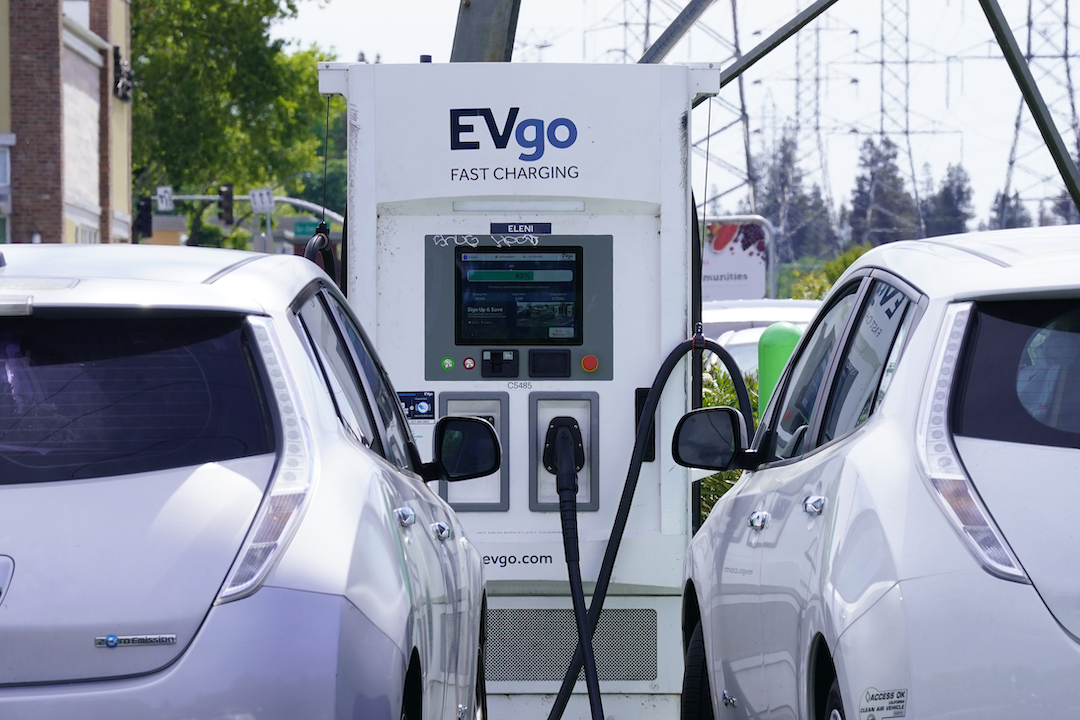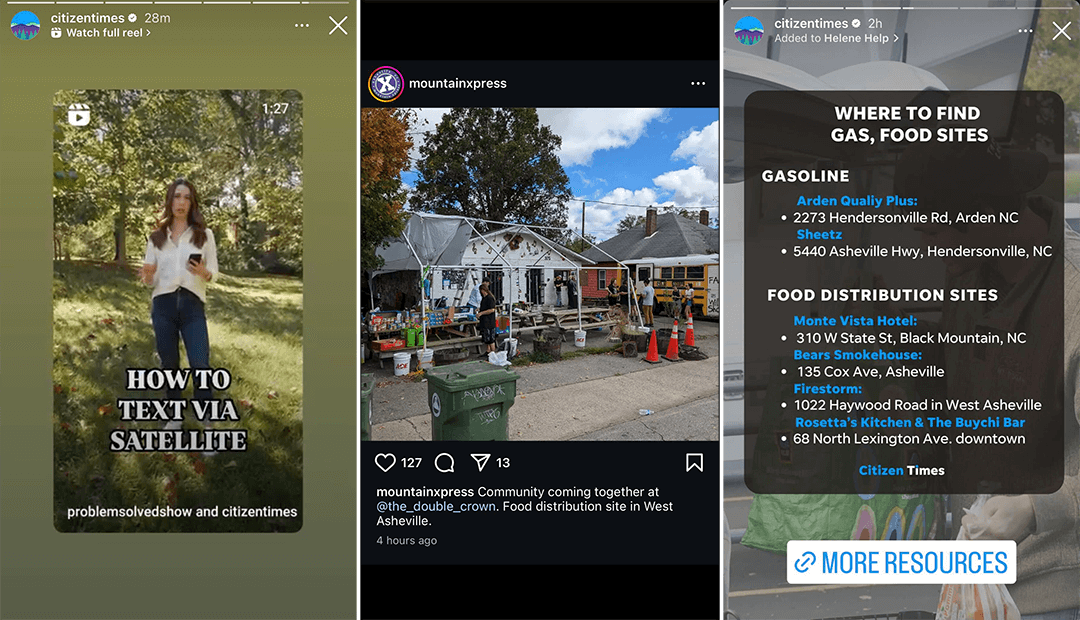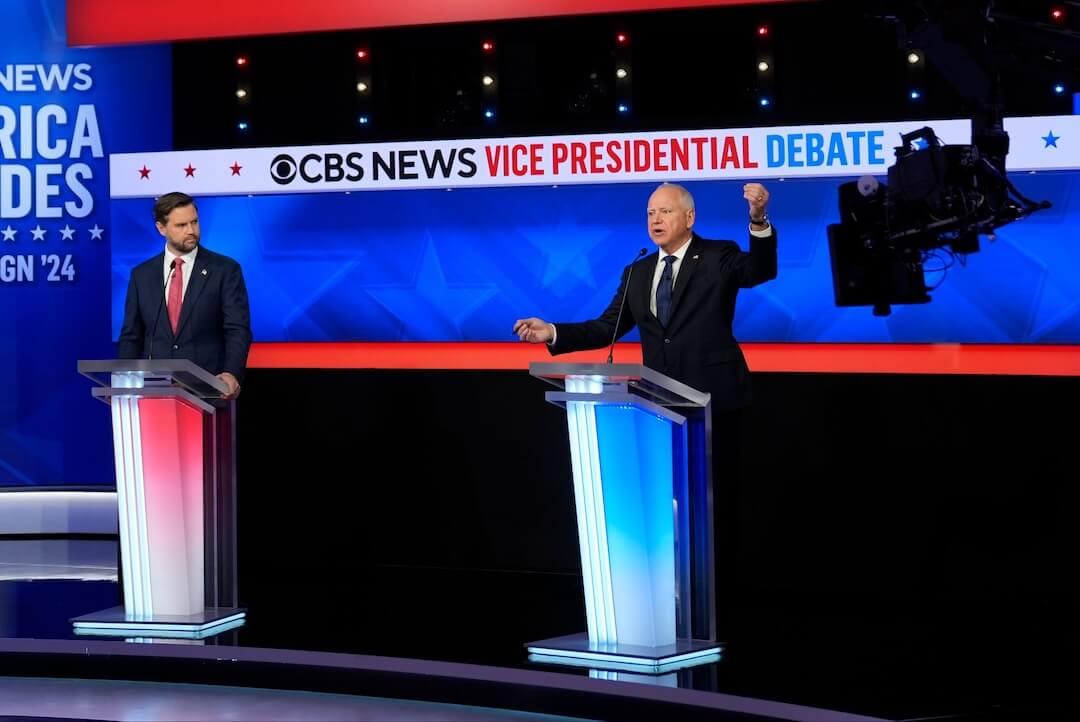The Biden administration is proposing what it calls the “strongest-ever” pollution standards for vehicles, priming the pump for cars and light trucks that are not powered by fossil fuels.
The new regulations wouldn’t require sales of electric vehicles. They would instead push auto manufacturers and consumers toward them by imposing strict standards on how much gas-powered vehicles can emit in greenhouse gases.
The administration wants electric vehicles to account for 67% of new passenger-car sales by 2032.
That would be a nearly tenfold increase in a nation where, compared to gasoline pumps, electric vehicle charging units are scarce.
The bipartisan infrastructure law that President Joe Biden signed in November 2021 includes investments in electric vehicle charging stations.
But if the proposed pollution standards become final, and auto manufacturers accelerate their pivot away from gas-powered vehicles, it’s an open question whether the nation will be ready to charge massive new fleets of electric vehicles.
“The question-mark is still the consumer — is the consumer ready to adapt as fast as the regulations are,” said Stephanie Brinley, an automotive analyst with S&P Global Mobility in suburban Detroit.
She said the regulations pose the question: “When are we an EV market? Not if.”
Why the new pollution standards?
The Biden administration on April 12 proposed the pollution standards, saying it wants the U.S. to lead “in the global race to a clean transportation future.”
The administration previously drew the wrath of environmentalists by approving the Willow oil-drilling plan in Alaska. The project involves sinking up to 199 wells across three drilling sites for up to 30 years. Critics questioned Biden’s commitment to fighting climate change, claiming the project would release 239 million metric tons of greenhouse gases.
A vast majority of scientists agree that climate change is driven by greenhouse gases released into the atmosphere by human activity.
In the U.S., transportation is the largest source of greenhouse gas emissions, thus the federal focus on vehicles.
The Environmental Protection Agency projects that its proposed standards would reduce greenhouse gas emissions from passenger cars and light trucks by 56% by 2032.
EVs now a fraction of new sales; charging stations sparse
Electric cars constituted 7% of all new vehicle sales in 2022, according to the Alliance for Automotive Innovation, an auto industry trade group.
At the end of 2022, 63% of the nation’s counties had five or fewer public charging stations and 39% had none, the group said.
Estimates vary on the number of publicly available charging ports, or units, in operation in the U.S. Those are units available to any electric vehicle and don’t include proprietary charging units such as those available only for Teslas.
The Alliance for Automotive Innovation said there were more than 103,000 public charging ports nationwide at the end of 2022. But 90% are Level 2 units, which can take four to 10 hours to fully charge an EV, while fast chargers known as Level 3, or DC, take 20 minutes to an hour.
The Biden administration’s estimate of public chargers is a bit higher — 140,000.
S&P Global Mobility, which analyzes the automotive industry, estimated that the nation has 147,000 public chargers. That doesn’t include nearly 17,000 Tesla-branded “superchargers,” which are generally available only for Tesla vehicles.
The numbers must grow to 2.13 million Level 2 and 172,000 Level 3 public chargers by 2030 to keep up with demand for electric vehicles, S&P Global Mobility said in January.
That’s far more than the 500,000 chargers that Biden has pledged to fund by 2030 through the 2021 infrastructure law. The law includes $7.5 billion to expand EV charging infrastructure: $5 billion to states on a formula basis and $2.5 billion in competitive grants to local governments.
The Alliance for Automotive Innovation called that funding a “major down payment,” but said, “we’re just not adding public charging in this country nearly fast enough to keep up with EV sales projections.”
In 2022, 930,000 new EVs were added to U.S. roads but only 24,622 new chargers, according to the trade group.
Engineering professor Jeremy Michalek, director of the Vehicle Electrification Group at Carnegie Mellon University, said many electric vehicle owners have their own home chargers and don’t use public chargers often. But he said many more public chargers will be needed as more people who don’t have their own garages buy EVs, as well as for such high-demand periods as holidays.
“We’re going to need a lot more high-speed chargers on highway corridors that are underutilized most of the year if we want to avoid long queues as people wait to charge on peak travel days,” Michalek said.
The EPA estimated it will cost $21 billion between 2027 and 2032 to provide enough chargers based on its emission proposals, a spokesperson said.
The private sector is helping meet the charging demand.
Volvo Cars and Starbucks partnered in 2022 to roll out charging stations at Starbucks locations in the West. In early April, Walmart announced that it would install thousands of car chargers at its stores nationwide by 2030. On April 18, a charging company announced a pilot project with New York City and Hyundai for curbside EV charging; you pull up to the charger as you would to a parking meter.
Such steps could help persuade more consumers to go electric, although there are still questions for many buyers about the cost of electric cars and the ease of keeping them charged. Electric vehicle owners can charge their cars at home, but on the road, there aren’t as many charging stations as there are gas stations.
A national poll released in April found that people were concerned about being able to charge an electric car.
In The Associated Press-NORC Center for Public Affairs Research poll, 47% of respondents said it was “not too likely” or “not at all likely” that their next vehicle purchase would be electric. Half said a lack of available charging stations was a deterrent.
Brinley, at S&P Global Mobility, said that shifting away from the ease of the corner gas station will take time.
“Consumers have a solution already and you’re asking them to choose a different solution that, for most consumers, is not as easy as what they already have,” she said.
This fact check was originally published by PolitiFact, which is part of the Poynter Institute. See the sources for this fact check here.







